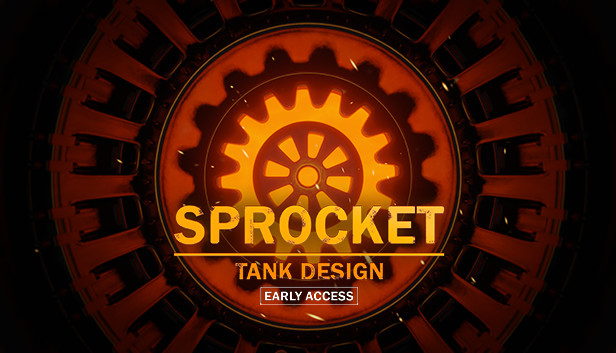For Sprocket players, this guide provides some basic tips to help players design engines and transmissions and avoid breakdowns, let’s check it out.
Introduction
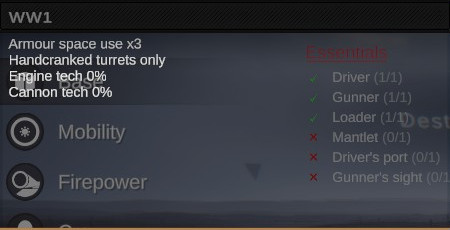
Most players will encounter engine trouble during the “No Tanks Land” scenario. Unlike the sandbox mode, “No Tanks Land” imposes restriction of engine size and number of cylinders. Additionally there are limits on the max rpms of a given engine for a given size.
This is meant to help players overcome some engine design issues, but is by no means exhaustive. Unfortunately I am still coming to grips with the game myself and this is guide is not intended for optimising or maximising performance.
Engine Sizing
A 6 Cylinder engine with a displacement of 1.0L per cylinder will have a Max RPM of 1700. As a result you should be adjusting the maximum and minimum target RPM range to be below the max RPM. Additionally, you should be selecting power to be rated within your target RPM range.
As for engine idle settings, I have not observed any noticeable changes in performance resulting from higher or lower idle rpm settings. It might be more important for mid to late war tanks where the engine may be responsible for supplying power to the turret traverse motor or elevation, wherein a minimum idle rpm is required to power the additional systems.
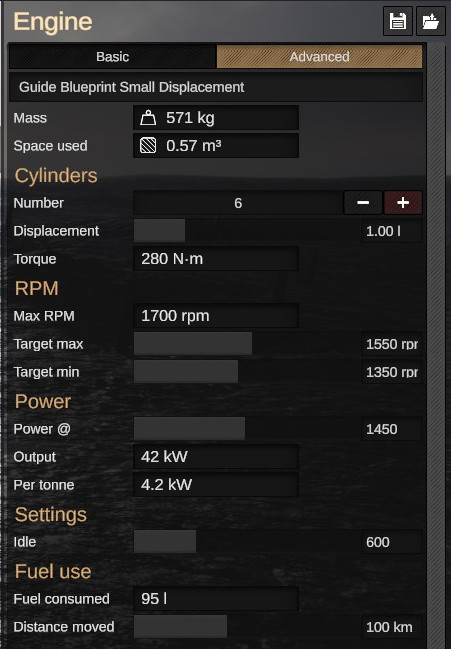
If you compare the larger displacement engine below, with 4.0L per cylinder, the Max RPM has reduced to 1100, as such the remaining variables should be adjusted accordingly.
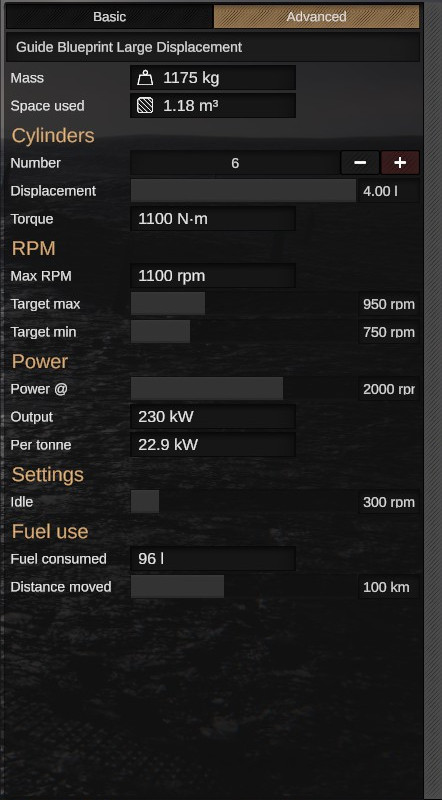
Ignoring transmission design:
- Larger engines operate at lower RPMs, and smaller engines at Higher RPMs;
- Larger engines develop greater torque and acceleration, but are bulky and suffer from lower top speeds;
- Smaller engines are more compact and can develop higher top speeds but may struggle under the weight of heavier tanks.
In summary, I strongly recommend experimenting with different engine displacement to get a feel for how the engines in game perform.
Transmission Design
Transmission design is less intuitive than the Engine Design Process, and an effective gearing ratio will need to consider:
- Gross Vehicle Weight;
- Engine Power;
- Torque;
- Target/Max RPM
Scenarios set during early tank development limit the capacity of Transmissions. For “No Tanks Land” you will be limited to 3 Gears forward and 2 Gears Reverse. When adjusting gear ratios to prevent red-lining the engine, the first culprit is typically the highest gear. The solution is then to reduce the gear ratio until the engine runs at a suitable RPM. Until the player base develops a sound understanding of the game mechanics, I imagine that the transmission design will remain a process of trial and error.
Below is an example of a transmission setup for a 24.0L WW1 engine
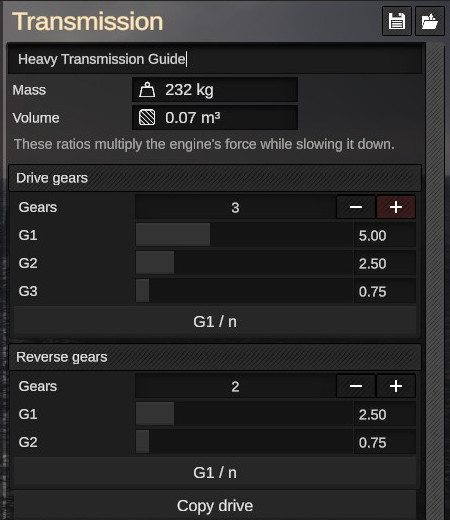
Below is an example of a transmission setup for a 6.0L WW1 engine
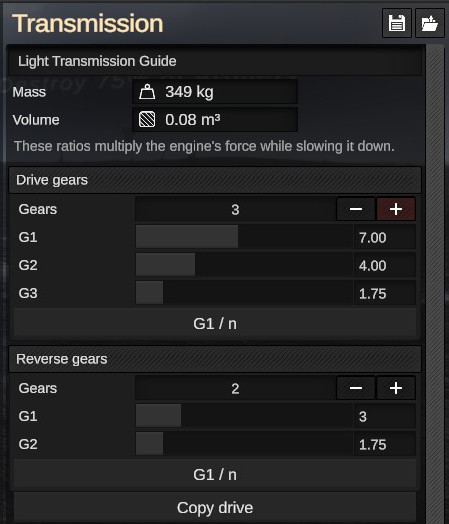
That’s all we are sharing today in Sprocket Engine and Transmission Design, if you have anything to add, please feel free to leave a comment below, you can also read the original article here, all the credits goes to the original author LukavMineav
Related Posts:
- Sprocket The Basic Guide For Every You Need to Know
- Sprocket Allied Italian Forces Pack Content List (Download)
- Sprocket How to Get the Scenario Only Vehicles
